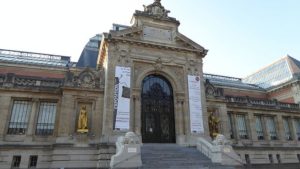The Musée des Beaux-Arts in Valenciennes, with its rich history and diverse collection, stands as a testament to the cultural evolution of northern France. In addition to housing one of the country’s most important collections of Flemish paintings, it also contains a wide variety of art across many genres and media. This diversity has led the museum administration to consider changing the museum’s name.
Museum leadership says its current name is “too limiting” and has announced it will change it as part of its ongoing renovations. The nineteenth-century building’s glass roof panels are in need of repair, but the renovations and the name change are parts of a larger Scientific & Cultural Project. This project, mandated by the national Ministry of Culture, aims to amplify the Valenciennes museum’s role as “a crossroads museum”, “a living museum”, and “a plural museum”. The museum being a crossroads is easy enough to understand. Valenciennes, close to the border with Belgium, is where cultures clash and synthesize both daily and over centuries. French, Habsburg, and Burgundian authorities have all ruled over the city, leaving their respective marks on local culture. Accepting the museum’s and the city’s identity as a crossroads is to recognize its “multifaceted identity, the fruit of a turbulent and multicultural history.” Becoming a living museum, on the other hand, pertains more towards looking at the future as well as the past. It indicates the desire to approach art as both a collection of static objects and a living process that continues today. They seek to embrace “the liveliness of art in the making” by welcoming contemporary artists into museum spaces. And then, finally, there is the creation of a plural museum. This is what the proposed name change seeks to address. The Scientific & Cultural Project recognizes that the museum’s collection is more than simply fine art. The Valenciennes Musée des Beaux-Art is renowned not just for painting and sculpture but for its archaeology and antiquities collections, as well as examples of the area’s heritage of craftsmanship. This includes the city’s lace and porcelain products, coveted throughout Europe through the eighteenth and nineteenth centuries. Exhibiting antiquities and crafts, particularly those from the surrounding area, aims to help locals “reconnect with this prestigious past that is barely visible today” due to conflict and a shifting geopolitical landscape.
Some French cultural commentators like Didier Rykner are pushing back against the name change and the entire Scientific & Cultural Project altogether, decrying it as “wokeism”. In reality, the term ‘wokeism’ is just as indefinable and amorphous as ‘fine arts’, now only serving as a final resort for critics who have few legitimate reasons for their criticism. Rykner criticized the name change as merely a semantic issue, quoting the French politician Jean Jaurès: “When men cannot change things, they change words.” But it seems Rykner has not paid any attention to what the Scientific & Cultural Project entails. The Valenciennes museum’s name change would not be aspirational; quite the opposite, actually. It is to reflect a change that has already occurred. Such criticisms, therefore, ring hollow, exposing that there are few things to complain about.
Even if critics like Rykner have nothing to stand on, keeping the museum’s current name may be good. While it is true that the ‘fine arts’ have typically only included certain media like painting, sculpture, and prints, there are two sides to this coin. The museum has decided that it is not restricted just to the fine arts and will, therefore, change its name to reflect the collection’s contents. However, there is another route: don’t change the name to meet the definition, but change the definition to reflect the name. The latter option would completely redefine fine art among cultural institutions. Oxford Languages defines fine art as “visual art whose products are to be appreciated primarily or solely for their imaginative, aesthetic, or intellectual content.” This definition implies that objects with a practical purpose do not qualify as fine art. A piece of porcelain can be beautiful and appreciated in a museum setting for its aesthetic value and craftsmanship. Still, it may have originally been intended for kitchen and dining use. The same thing goes for a necklace or a ring. The metalworking can be beautiful by itself but was intended to be worn on one’s finger or about one’s neck. Is it the name of the museum that is restricting, or is it our definition of fine art? What is and is not fine art is incredibly subjective, with our definitions changing from generation to generation. An artist’s intent is important for some, while their training and talent may be more important for others. The museum has not even chosen a new name yet, but I would be fine with a cultural institution like the Valenciennes Musée des Beaux-Arts changing its name if it feels like it does not reflect its collection or purpose. However, doing something as revolutionary as daring to change the definition of fine art would be exciting, indeed.

